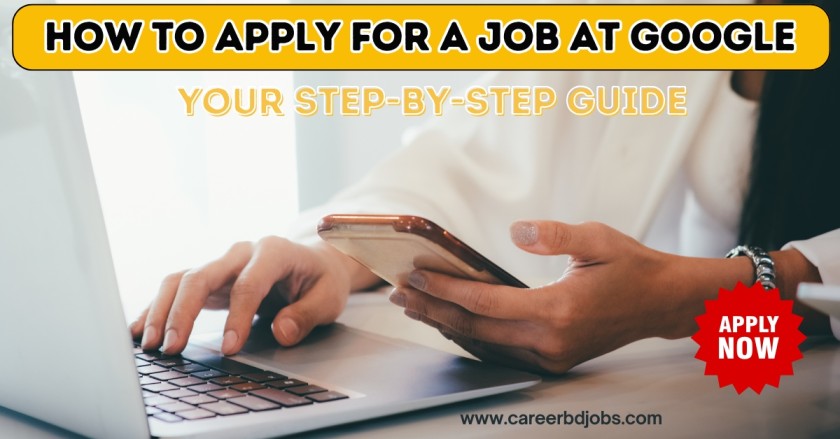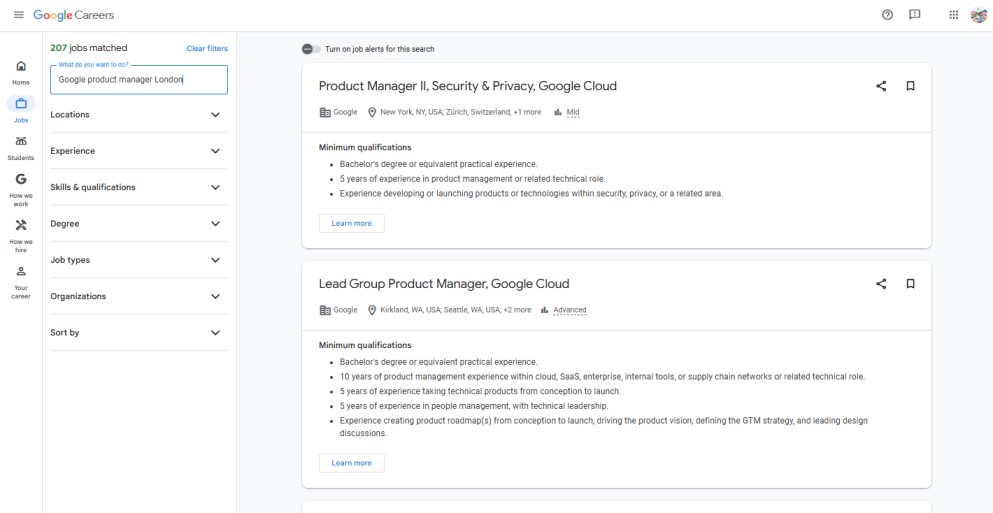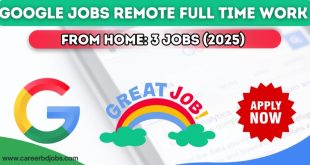
How to Apply for a Job at Google: Your Step-by-Step Guide
Landing a job at Google is a dream for many international job seekers, engineers, and students. Known for its innovative culture, competitive salaries, and world-class benefits, Google attracts top talent globally. But with millions of applications flooding in each year, how do you stand out? Whether you’re an aspiring software engineer, marketing professional, or data analyst, applying for a job at Google requires strategy, preparation, and persistence. In this comprehensive guide, we’ll walk you through the exact steps to apply for a job at Google, share insider tips, and provide real-world examples to help you navigate the process with confidence.
Why Work at Google?
Google isn’t just a tech giant—it’s a hub of innovation, collaboration, and opportunity. From flexible work environments to cutting-edge projects like artificial intelligence and cloud computing, Google offers roles for diverse skill sets. But the competition is fierce. According to a 2023 report, Google receives over 3 million job applications annually, accepting less than 1% of applicants. Don’t let those numbers discourage you! With the right approach, you can position yourself as a top candidate. Let’s dive into the steps to make your application shine.
Step 1: Understanding Google’s Hiring Process
Before you hit “submit” on your application, it’s crucial to understand how Google’s hiring process works. Unlike traditional companies, Google uses a structured, data-driven approach to evaluate candidates.
What to Expect in Google’s Hiring Process
- Application Submission: You’ll submit your resume, cover letter, and other documents through Google’s careers portal.
- Screening: Recruiters review applications to shortlist candidates based on skills and experience.
- Interviews: Multiple rounds, including phone screenings, technical interviews (for engineering roles), and behavioral interviews.
- Team Matching: If you pass the interviews, Google matches you with a team that fits your skills and interests.
- Offer: Successful candidates receive an offer, followed by onboarding.
Case Study: Maria’s Journey to Google
Maria, a software engineering graduate from Brazil, dreamed of working at Google’s Mountain View headquarters. She applied for a software engineer role in 2024. After tailoring her resume to highlight her open-source contributions and internships, she was invited for a phone screening. Maria prepared rigorously for Google’s coding interviews using platforms like LeetCode and practiced behavioral questions with a mentor. After four rounds of interviews, she landed an offer. Her secret? Researching Google’s culture and aligning her application with their values.
Step 2: Finding the Right Role for You
Google offers thousands of job openings across engineering, product management, marketing, sales, and more. To apply for a job at Google, start by identifying roles that match your skills and career goals.
How to Search for Google Jobs
- Visit Google Careers: Go to careers.google.com and use filters like location, job type, and skills to narrow down opportunities.
- Leverage LinkedIn: Follow Google’s LinkedIn page for job postings and employee insights.
- Attend Google Events: Virtual career fairs or tech talks can connect you with recruiters.
- Explore Specialized Programs: Google offers internships, apprenticeships, and roles for new graduates.
Pro Tip: Tailor Your Search
Use specific keywords like “Google software engineer remote” or “Google product manager London” to find roles that suit your expertise and location preferences. For example, if you’re a data scientist in India, search for “Google data scientist Bangalore” to find local opportunities.
Google data scientist Bangalore
Google software engineer remote
Google product manager London
Step 3: Crafting a Standout Application
Your application is your first impression. A well-crafted resume and cover letter can make or break your chances of getting noticed.
Resume Tips for Google
- Keep It Concise: Limit your resume to one page (two for senior roles).
- Highlight Impact: Use metrics to showcase achievements (e.g., “Improved app performance by 20% through optimized algorithms”).
- Include Relevant Skills: For technical roles, list programming languages (Python, Java, C++), frameworks, or tools.
- Showcase Projects: Mention side projects, open-source contributions, or hackathons.
- Use Action Verbs: Start bullet points with words like “developed,” “led,” or “optimized.”
Cover Letter Best Practices
- Personalize It: Address the letter to the hiring manager or recruiter (if known).
- Tell a Story: Share a brief anecdote about why you’re passionate about Google.
- Align with Google’s Mission: Emphasize how your values align with Google’s mission to “organize the world’s information.”
Example: Ahmed’s Winning Resume
Ahmed, a product manager from Egypt, applied for a Google product manager role in 2024. His resume highlighted his experience launching a mobile app that gained 50,000 users in six months. He included a GitHub link to a personal project and tailored his cover letter to Google’s focus on user-centric innovation. His application stood out, earning him a phone interview.
Step 4: Preparing for Google’s Interviews
Google’s interviews are rigorous, testing both technical skills and cultural fit. Preparation is key to success.
Types of Google Interviews
- Phone/Video Screening: A 30–60-minute call with a recruiter or engineer to assess your skills.
- Technical Interviews: For engineering roles, expect coding challenges on a shared whiteboard or platform like Google Docs. Questions may cover data structures, algorithms, or system design.
- Behavioral Interviews: Questions like “Tell me about a time you solved a complex problem” assess your soft skills and alignment with Google’s values.
How to Prepare
- Practice Coding: Use platforms like LeetCode, HackerRank, or CodeSignal to practice medium-to-hard problems.
- Study System Design: For senior roles, brush up on designing scalable systems (e.g., a URL shortener or messaging app).
- Mock Interviews: Partner with a friend or use services like Pramp or Interviewing.io.
- Research Google’s Culture: Familiarize yourself with Google’s values, like “Focus on the user” and “Think big.”
Comparison Table: Coding Practice Platforms
| Platform | Best For | Free Tier Available? | Unique Features |
| LeetCode | Algorithm practice | Yes | Google-tagged questions, mock tests |
| HackerRank | Coding and system design | Yes | Company-specific challenges |
| CodeSignal | Real-world coding scenarios | Yes | Gamified interface, arcade mode |
| Interviewing.io | Mock technical interviews | Limited | Live feedback from engineers |
Step 5: Nailing the Interview Day
On interview day, confidence and clarity are essential. Here’s how to shine during Google’s interviews.
Technical Interview Tips
- Think Aloud: Explain your thought process while solving coding problems.
- Test Your Code: Walk through your solution with test cases to catch errors.
- Ask Clarifying Questions: Ensure you understand the problem before diving in.
Behavioral Interview Tips
- Use the STAR Method: Structure answers with Situation, Task, Action, and Result.
- Show Googleyness: Highlight traits like collaboration, innovation, and adaptability.
- Be Authentic: Share genuine experiences that reflect your personality.
Case Study: Priya’s Interview Success
Priya, a computer science student from India, prepared for her Google internship interview by practicing 100+ LeetCode problems and studying Google’s system design principles. During her technical interview, she solved a binary tree problem by breaking it down step-by-step and explaining her approach clearly. For her behavioral interview, she shared a story about leading a university hackathon, showcasing her leadership skills. Priya’s preparation paid off—she secured a summer internship at Google’s Bangalore office.
Step 6: Post-Interview Follow-Up
After your interviews, the waiting game begins. Here’s how to stay proactive.
What to Do
- Send a Thank-You Note: Email your interviewer(s) within 24 hours, expressing gratitude and reiterating your enthusiasm.
- Follow Up Politely: If you don’t hear back within the timeline provided (usually 1–2 weeks), send a polite email to the recruiter.
- Reflect on Feedback: If you don’t get an offer, ask for feedback to improve for future applications.
Example Thank-You Email
Subject: Thank You for the Interview—[Your Name]
Dear [Interviewer’s Name],
Thank you for taking the time to interview me for the [Role] position at Google. I enjoyed discussing [specific topic, e.g., scalable system design] and learning about Google’s innovative projects. I’m even more excited about the opportunity to contribute to your team. Please let me know if there’s anything else I can provide.
Best regards,
[Your Name]
Step 7: Building a Long-Term Strategy
If you don’t succeed on your first try, don’t give up. Many Google employees applied multiple times before getting hired.
Tips for Long-Term Success
- Upskill Continuously: Take online courses (e.g., Coursera, edX) to stay competitive.
- Network with Googlers: Connect with Google employees on LinkedIn or at industry events.
- Apply Again: Google allows re-applications after 6–12 months, depending on the role.
- Contribute to Open Source: Build a portfolio by contributing to projects on GitHub.
FAQs About Applying for a Job at Google
1. Do I need a degree to work at Google?
No, Google doesn’t require a degree for all roles. While many positions prefer candidates with a bachelor’s or master’s degree, Google values skills and experience. For example, self-taught programmers with strong portfolios have landed roles through demonstrated expertise.
2. How long does Google’s hiring process take?
The process typically takes 4–8 weeks, depending on the role and location. It includes application review, interviews, and team matching. Timelines may vary for international candidates due to visa processing.
3. Can international candidates apply for Google jobs?
Yes, Google hires globally. International candidates may need work authorization or visas, depending on the country. Check the job description for eligibility and consult Google’s careers portal for visa support details.
Conclusion: Your Path to Google Starts Now
Applying for a job at Google is a challenging but rewarding journey. By understanding the hiring process, tailoring your application, and preparing thoroughly for interviews, you can increase your chances of success. Stories like Maria’s, Ahmed’s, and Priya’s show that with dedication and strategy, landing a role at Google is achievable. Don’t let the competition intimidate you—focus on showcasing your unique skills and passion for innovation.
Action Plan to Get Started
- Research Roles: Visit Google Careers and identify 2–3 positions that match your skills.
- Update Your Resume: Tailor it with measurable achievements and relevant projects.
- Practice Coding: Spend 2–3 hours weekly on platforms like LeetCode.
- Network: Connect with Google employees or attend virtual career events.
- Apply: Submit your application and follow up professionally.
Call to Action
Ready to take the first step toward your dream job at Google? Share your thoughts or questions in the comments below—we’d love to hear your story! Subscribe to our newsletter for more career tips, or download our free “Google Interview Prep Checklist” to stay organized. Your journey to Google starts today—go for it!
 Career BD Jobs All International Jobs Circular
Career BD Jobs All International Jobs Circular









